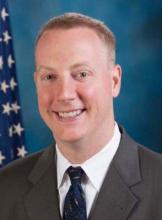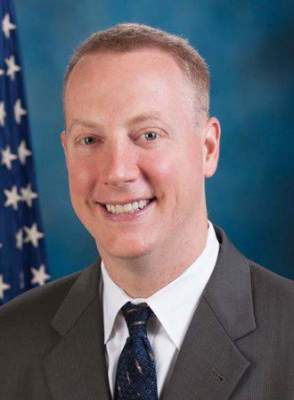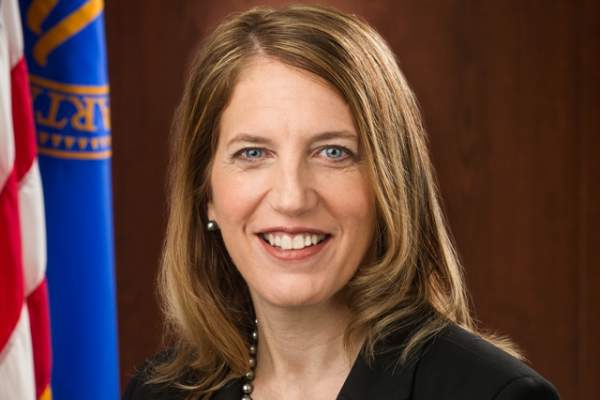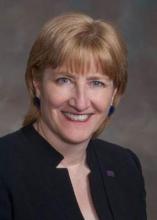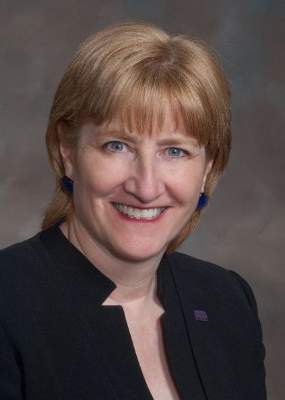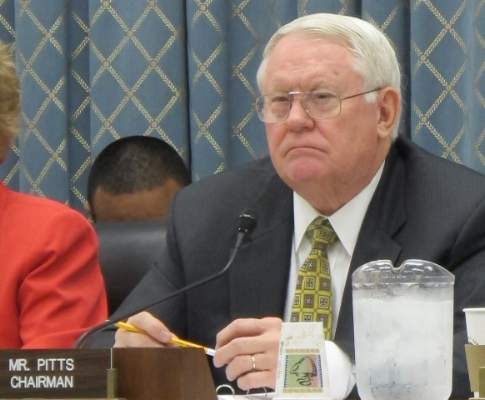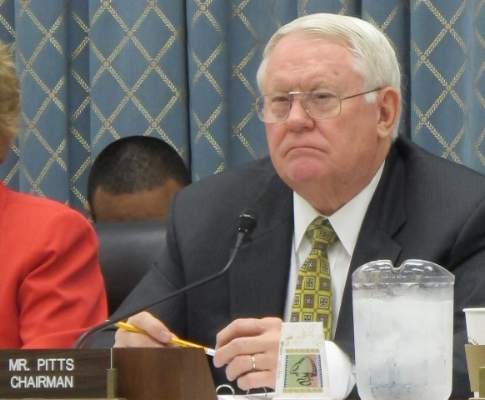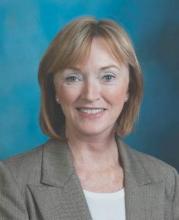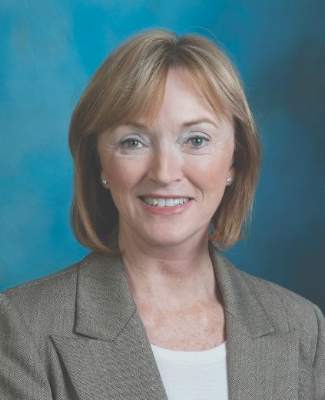User login
ICD-10: No more extensions expected – Senate panel
No more extensions are expected on the ICD-10 implementation deadline, according to leadership of the Senate Finance Committee.
Based on information released in a Feb. 6 Government Accountability Office report, there is no reason to delay implementation any further, Sen. Orrin Hatch (R-Utah), Finance Committee chairman, and Sen. Ron Wyden (D-Ore.), the committee’s ranking member, said in a joint statement.
The GAO report examines efforts by the Centers for Medicare & Medicaid Services to prepare for the transition to ICD-10 and to address physician concerns about the transition. The GAO found that CMS has completed all ICD-10–related changes to its Medicare payment system, though work still needs to be done to prepare for the transition on the state level for the Medicaid program.
“As demonstrated by this report, the provider outreach and responsiveness to stakeholder concerns from CMS have kept the agency on track to upgrade to the next level of health care coding,” Sen. Hatch said.
“CMS has taken unprecedented actions to help providers prepare for this change,” Sen. Wyden added. “We will continue to monitor the testing CMS is conducting as we near the Oct. 1 implementation date.”
The House Energy & Commerce Committee’s Subcommittee on Health will hold a hearing Feb. 11 to review the ICD-10 transition readiness.
No more extensions are expected on the ICD-10 implementation deadline, according to leadership of the Senate Finance Committee.
Based on information released in a Feb. 6 Government Accountability Office report, there is no reason to delay implementation any further, Sen. Orrin Hatch (R-Utah), Finance Committee chairman, and Sen. Ron Wyden (D-Ore.), the committee’s ranking member, said in a joint statement.
The GAO report examines efforts by the Centers for Medicare & Medicaid Services to prepare for the transition to ICD-10 and to address physician concerns about the transition. The GAO found that CMS has completed all ICD-10–related changes to its Medicare payment system, though work still needs to be done to prepare for the transition on the state level for the Medicaid program.
“As demonstrated by this report, the provider outreach and responsiveness to stakeholder concerns from CMS have kept the agency on track to upgrade to the next level of health care coding,” Sen. Hatch said.
“CMS has taken unprecedented actions to help providers prepare for this change,” Sen. Wyden added. “We will continue to monitor the testing CMS is conducting as we near the Oct. 1 implementation date.”
The House Energy & Commerce Committee’s Subcommittee on Health will hold a hearing Feb. 11 to review the ICD-10 transition readiness.
No more extensions are expected on the ICD-10 implementation deadline, according to leadership of the Senate Finance Committee.
Based on information released in a Feb. 6 Government Accountability Office report, there is no reason to delay implementation any further, Sen. Orrin Hatch (R-Utah), Finance Committee chairman, and Sen. Ron Wyden (D-Ore.), the committee’s ranking member, said in a joint statement.
The GAO report examines efforts by the Centers for Medicare & Medicaid Services to prepare for the transition to ICD-10 and to address physician concerns about the transition. The GAO found that CMS has completed all ICD-10–related changes to its Medicare payment system, though work still needs to be done to prepare for the transition on the state level for the Medicaid program.
“As demonstrated by this report, the provider outreach and responsiveness to stakeholder concerns from CMS have kept the agency on track to upgrade to the next level of health care coding,” Sen. Hatch said.
“CMS has taken unprecedented actions to help providers prepare for this change,” Sen. Wyden added. “We will continue to monitor the testing CMS is conducting as we near the Oct. 1 implementation date.”
The House Energy & Commerce Committee’s Subcommittee on Health will hold a hearing Feb. 11 to review the ICD-10 transition readiness.
Republican-controlled House votes to repeal ACA
Once again, the Republican-controlled House voted to repeal the Affordable Care Act.
But for the first time, this bill – H.R. 596 – could get a vote in the Republican-controlled Senate, something that did not happen for the 56 bills to repeal or dismantle the health reform law while Democrats controlled that chamber.
H.R. 596 passed the House on Feb. 3 by a 239-186 vote, with three Republicans voting against repeal and no Democrats voting for it. The bill calls for the repeal of the ACA and directs the Congressional committees with jurisdiction over health care to draft replacement legislation.
President Obama has vowed repeatedly to veto any legislation that repeals the health care reform law.
Debate preceding the vote focused on the usual arguments, with Republicans asserting the ACA has increased health insurance costs and premiums while serving as a job killer.
During debate on the House floor, Rep. Gary Palmer (R-Ala.) argued that 4 years after passage of the law, 41 million people are still without health insurance, and that premiums “have skyrocketed,” with some seeing increases as high as 78%. He added that there are “millions of people out of full-time work and millions more forced into part-time jobs.”
Democrats praised the growth in covered lives, as well as the slowdown in growth of Medicare costs in calling on members to vote against the bill.
Rep. Lois Capps (D-Calif.) noted that a repeal vote “will actually take health insurance away from millions of Americans,” adding that the ACA “is not perfect and there are clear areas where we could work together to build on and improve this law, but today’s repeal vote would turn back time, reverting back to a system everyone agreed was broken.”
Democrats also complained that the bill did not go through regular order through the committee hearing and markup process, but rather went straight to the floor for a vote with no amendments allowed to be introduced during the debate.
Once again, the Republican-controlled House voted to repeal the Affordable Care Act.
But for the first time, this bill – H.R. 596 – could get a vote in the Republican-controlled Senate, something that did not happen for the 56 bills to repeal or dismantle the health reform law while Democrats controlled that chamber.
H.R. 596 passed the House on Feb. 3 by a 239-186 vote, with three Republicans voting against repeal and no Democrats voting for it. The bill calls for the repeal of the ACA and directs the Congressional committees with jurisdiction over health care to draft replacement legislation.
President Obama has vowed repeatedly to veto any legislation that repeals the health care reform law.
Debate preceding the vote focused on the usual arguments, with Republicans asserting the ACA has increased health insurance costs and premiums while serving as a job killer.
During debate on the House floor, Rep. Gary Palmer (R-Ala.) argued that 4 years after passage of the law, 41 million people are still without health insurance, and that premiums “have skyrocketed,” with some seeing increases as high as 78%. He added that there are “millions of people out of full-time work and millions more forced into part-time jobs.”
Democrats praised the growth in covered lives, as well as the slowdown in growth of Medicare costs in calling on members to vote against the bill.
Rep. Lois Capps (D-Calif.) noted that a repeal vote “will actually take health insurance away from millions of Americans,” adding that the ACA “is not perfect and there are clear areas where we could work together to build on and improve this law, but today’s repeal vote would turn back time, reverting back to a system everyone agreed was broken.”
Democrats also complained that the bill did not go through regular order through the committee hearing and markup process, but rather went straight to the floor for a vote with no amendments allowed to be introduced during the debate.
Once again, the Republican-controlled House voted to repeal the Affordable Care Act.
But for the first time, this bill – H.R. 596 – could get a vote in the Republican-controlled Senate, something that did not happen for the 56 bills to repeal or dismantle the health reform law while Democrats controlled that chamber.
H.R. 596 passed the House on Feb. 3 by a 239-186 vote, with three Republicans voting against repeal and no Democrats voting for it. The bill calls for the repeal of the ACA and directs the Congressional committees with jurisdiction over health care to draft replacement legislation.
President Obama has vowed repeatedly to veto any legislation that repeals the health care reform law.
Debate preceding the vote focused on the usual arguments, with Republicans asserting the ACA has increased health insurance costs and premiums while serving as a job killer.
During debate on the House floor, Rep. Gary Palmer (R-Ala.) argued that 4 years after passage of the law, 41 million people are still without health insurance, and that premiums “have skyrocketed,” with some seeing increases as high as 78%. He added that there are “millions of people out of full-time work and millions more forced into part-time jobs.”
Democrats praised the growth in covered lives, as well as the slowdown in growth of Medicare costs in calling on members to vote against the bill.
Rep. Lois Capps (D-Calif.) noted that a repeal vote “will actually take health insurance away from millions of Americans,” adding that the ACA “is not perfect and there are clear areas where we could work together to build on and improve this law, but today’s repeal vote would turn back time, reverting back to a system everyone agreed was broken.”
Democrats also complained that the bill did not go through regular order through the committee hearing and markup process, but rather went straight to the floor for a vote with no amendments allowed to be introduced during the debate.
CMS to shorten 2015 MU attestation to 90 days
Physicians will have to attest to meeting Stage 2 meaningful use criteria for 90 days in 2015, officials at the Centers for Medicare and Medicaid Services announced Jan. 29.
Currently under the meaningful use program, physicians must attest that they met requirements for the entire year or be subject to a Medicare payment reduction. Low attestation numbers for 2015 suggested that many doctors would not be able to meet the full year requirement. Additionally, Congress has been looking at forcing the change by a legislative mandate.
The change, along with a few other program modifications, will be detailed in a proposed rule.
“The new rule, expected this spring, would be intended to be responsive to provider concerns about software implementation, information exchange readiness, and other related concerns in 2015,” Dr. Patrick Conway, CMS Chief Medical Officer, said in a Jan. 29 blog post. The changes “would help to reduce the reporting burden on providers, while supporting the long term goals of the program.”
Physicians’ organizations applauded the proposed change.
The American Medical Association welcomes the Centers for Medicare and Medicaid Services’ (CMS) announcement of plans to address some of the issues we have raised with the Meaningful Use program through rulemaking aimed at requirements for meeting Meaningful Use in 2015.
The American Medical Association is “eager to see the proposed rule as we have been working with CMS and the Office of the National Coordinator for Health IT, offering solutions to improve the incentive program for quite some time,” Dr. Steven J. Stack, AMA president-elect, said in a statement. “EHRs are intended to help physicians improve care for their patients, but unfortunately, today’s EHR certification standards and the stringent requirements of the Meaningful Use program do not support that goal and decrease efficiency.”
Dr. Patrick T. O’Gara, president of the American College of Cardilogy said, “We are pleased that CMS responded to feedback from the ACC and other health organizations and is considering shortening the 2015 reporting period to 90 days for electronic health records. He added that CMS should move quickly to disseminate information regarding the reporting timeline, so that physicians could successfully attest to Stage 2.
A separate rule on Stage 3 of meaningful use also will be published this year.
Read the full post on the CMS Blog.
Physicians will have to attest to meeting Stage 2 meaningful use criteria for 90 days in 2015, officials at the Centers for Medicare and Medicaid Services announced Jan. 29.
Currently under the meaningful use program, physicians must attest that they met requirements for the entire year or be subject to a Medicare payment reduction. Low attestation numbers for 2015 suggested that many doctors would not be able to meet the full year requirement. Additionally, Congress has been looking at forcing the change by a legislative mandate.
The change, along with a few other program modifications, will be detailed in a proposed rule.
“The new rule, expected this spring, would be intended to be responsive to provider concerns about software implementation, information exchange readiness, and other related concerns in 2015,” Dr. Patrick Conway, CMS Chief Medical Officer, said in a Jan. 29 blog post. The changes “would help to reduce the reporting burden on providers, while supporting the long term goals of the program.”
Physicians’ organizations applauded the proposed change.
The American Medical Association welcomes the Centers for Medicare and Medicaid Services’ (CMS) announcement of plans to address some of the issues we have raised with the Meaningful Use program through rulemaking aimed at requirements for meeting Meaningful Use in 2015.
The American Medical Association is “eager to see the proposed rule as we have been working with CMS and the Office of the National Coordinator for Health IT, offering solutions to improve the incentive program for quite some time,” Dr. Steven J. Stack, AMA president-elect, said in a statement. “EHRs are intended to help physicians improve care for their patients, but unfortunately, today’s EHR certification standards and the stringent requirements of the Meaningful Use program do not support that goal and decrease efficiency.”
Dr. Patrick T. O’Gara, president of the American College of Cardilogy said, “We are pleased that CMS responded to feedback from the ACC and other health organizations and is considering shortening the 2015 reporting period to 90 days for electronic health records. He added that CMS should move quickly to disseminate information regarding the reporting timeline, so that physicians could successfully attest to Stage 2.
A separate rule on Stage 3 of meaningful use also will be published this year.
Read the full post on the CMS Blog.
Physicians will have to attest to meeting Stage 2 meaningful use criteria for 90 days in 2015, officials at the Centers for Medicare and Medicaid Services announced Jan. 29.
Currently under the meaningful use program, physicians must attest that they met requirements for the entire year or be subject to a Medicare payment reduction. Low attestation numbers for 2015 suggested that many doctors would not be able to meet the full year requirement. Additionally, Congress has been looking at forcing the change by a legislative mandate.
The change, along with a few other program modifications, will be detailed in a proposed rule.
“The new rule, expected this spring, would be intended to be responsive to provider concerns about software implementation, information exchange readiness, and other related concerns in 2015,” Dr. Patrick Conway, CMS Chief Medical Officer, said in a Jan. 29 blog post. The changes “would help to reduce the reporting burden on providers, while supporting the long term goals of the program.”
Physicians’ organizations applauded the proposed change.
The American Medical Association welcomes the Centers for Medicare and Medicaid Services’ (CMS) announcement of plans to address some of the issues we have raised with the Meaningful Use program through rulemaking aimed at requirements for meeting Meaningful Use in 2015.
The American Medical Association is “eager to see the proposed rule as we have been working with CMS and the Office of the National Coordinator for Health IT, offering solutions to improve the incentive program for quite some time,” Dr. Steven J. Stack, AMA president-elect, said in a statement. “EHRs are intended to help physicians improve care for their patients, but unfortunately, today’s EHR certification standards and the stringent requirements of the Meaningful Use program do not support that goal and decrease efficiency.”
Dr. Patrick T. O’Gara, president of the American College of Cardilogy said, “We are pleased that CMS responded to feedback from the ACC and other health organizations and is considering shortening the 2015 reporting period to 90 days for electronic health records. He added that CMS should move quickly to disseminate information regarding the reporting timeline, so that physicians could successfully attest to Stage 2.
A separate rule on Stage 3 of meaningful use also will be published this year.
Read the full post on the CMS Blog.
HHS: Half of Medicare payments tied to value, quality by 2018
The move to value- and quality-based payments gained impetus as the Department of Health & Human Services called for half of all Medicare payments to be out of fee-for-service by the end of 2018.
“This is the first time in the history of the program that explicit goals for alternative payment models and value-based payment models have been set for Medicare,” HHS Secretary Sylvia Burwell said in an editorial Jan. 26 in the New England Journal of Medicine (doi 10.1056.NEJMp1500445).
The goal is “to move away from the old way of doing things, which amounted to, ‘the more you do, the more you get paid,’ by linking nearly all pay to quality and value in some way to see that we are spending smarter,” Ms. Burwell said in a blog post on the HHS website.
As interim goals, Ms. Burwell said HHS aims to have 30% of Medicare payments tied to quality or value through alternative payment models by the end of 2016.
Ms. Burwell identified three strategies that the agency will employ. “The first is incentives: a major thrust of our efforts is to create an environment in which hospitals, physicians, and other providers are rewarded for delivering high-quality health care and have the resources and flexibility they need to do so.”
The Affordable Care Act provides a number of alternative payment models – accountable care organizations, patient-centered medical homes, and new models of bundled payments – to get this started.
“Looking ahead, we plan to develop and test new payment models for specialty care, starting with oncology care, and institute payments to providers for care coordination for patients with chronic conditions,” she said.
That emphasis on care coordination, along with population health, is the second focus. HHS plans to invest up to $800 million in providing hands-on support to 150,000 physicians “for developing skills and tools needed to improve care delivery and transition to alternative payment models.”
Finally, the agency seeks to accelerate data availability to help clinical decision making. Ms. Burwell highlighted ongoing efforts, including the federal meaningful use efforts.
The announcement received early support from the National Quality Forum and the American Medical Association.
“In order for payment models based on value to really work, all providers need clear, consistent measures that drive improvements in care and provide meaningful information for patients, while being clinically relevant and actionable for providers,” Dr. Christine Cassel, NQF president and CEO said in a statement. “The health care community needs better measures faster. The more efficient NQF process is key to meeting this challenge.”
AMA President Robert Wah said in a statement that physicians “have many ideas for redesigning and improving the delivery of high-quality patient care in this country. We strongly support reform of the Medicare payment system, including elimination of Medicare’s flawed sustainable growth rate formula, which provides a pathway for physicians to innovate and develop new models of health care delivery for our patients.”
The traditional method of fee for service pays providers the same, regardless of the quality or effectiveness of the care rendered. Indeed, one could argue that worse service delivery generated more revenue for additional care associated with complications or misdiagnoses.
Arkansas Medicaid has initiated payment reform by explicitly rewarding those physicians and hospitals that achieve quality outcomes at lower total resource utilization for a given episode of care. For the most part, local clinical leaders have supported the notion that more effective care deserves better payment than lesser quality work.
Administrative and clinical data analytics will increasingly allow for more nuanced evaluation of clinical episodes to make such determination fair and risk adjusted. Fee for service may well survive, but with payments adjusted for accountability for outcomes determined by quality and effectiveness metrics.
Dr. William Golden is professor of medicine and public health at University of Arkansas, Little Rock, and medical director of Arkansas DHS/Medicaid.
The traditional method of fee for service pays providers the same, regardless of the quality or effectiveness of the care rendered. Indeed, one could argue that worse service delivery generated more revenue for additional care associated with complications or misdiagnoses.
Arkansas Medicaid has initiated payment reform by explicitly rewarding those physicians and hospitals that achieve quality outcomes at lower total resource utilization for a given episode of care. For the most part, local clinical leaders have supported the notion that more effective care deserves better payment than lesser quality work.
Administrative and clinical data analytics will increasingly allow for more nuanced evaluation of clinical episodes to make such determination fair and risk adjusted. Fee for service may well survive, but with payments adjusted for accountability for outcomes determined by quality and effectiveness metrics.
Dr. William Golden is professor of medicine and public health at University of Arkansas, Little Rock, and medical director of Arkansas DHS/Medicaid.
The traditional method of fee for service pays providers the same, regardless of the quality or effectiveness of the care rendered. Indeed, one could argue that worse service delivery generated more revenue for additional care associated with complications or misdiagnoses.
Arkansas Medicaid has initiated payment reform by explicitly rewarding those physicians and hospitals that achieve quality outcomes at lower total resource utilization for a given episode of care. For the most part, local clinical leaders have supported the notion that more effective care deserves better payment than lesser quality work.
Administrative and clinical data analytics will increasingly allow for more nuanced evaluation of clinical episodes to make such determination fair and risk adjusted. Fee for service may well survive, but with payments adjusted for accountability for outcomes determined by quality and effectiveness metrics.
Dr. William Golden is professor of medicine and public health at University of Arkansas, Little Rock, and medical director of Arkansas DHS/Medicaid.
The move to value- and quality-based payments gained impetus as the Department of Health & Human Services called for half of all Medicare payments to be out of fee-for-service by the end of 2018.
“This is the first time in the history of the program that explicit goals for alternative payment models and value-based payment models have been set for Medicare,” HHS Secretary Sylvia Burwell said in an editorial Jan. 26 in the New England Journal of Medicine (doi 10.1056.NEJMp1500445).
The goal is “to move away from the old way of doing things, which amounted to, ‘the more you do, the more you get paid,’ by linking nearly all pay to quality and value in some way to see that we are spending smarter,” Ms. Burwell said in a blog post on the HHS website.
As interim goals, Ms. Burwell said HHS aims to have 30% of Medicare payments tied to quality or value through alternative payment models by the end of 2016.
Ms. Burwell identified three strategies that the agency will employ. “The first is incentives: a major thrust of our efforts is to create an environment in which hospitals, physicians, and other providers are rewarded for delivering high-quality health care and have the resources and flexibility they need to do so.”
The Affordable Care Act provides a number of alternative payment models – accountable care organizations, patient-centered medical homes, and new models of bundled payments – to get this started.
“Looking ahead, we plan to develop and test new payment models for specialty care, starting with oncology care, and institute payments to providers for care coordination for patients with chronic conditions,” she said.
That emphasis on care coordination, along with population health, is the second focus. HHS plans to invest up to $800 million in providing hands-on support to 150,000 physicians “for developing skills and tools needed to improve care delivery and transition to alternative payment models.”
Finally, the agency seeks to accelerate data availability to help clinical decision making. Ms. Burwell highlighted ongoing efforts, including the federal meaningful use efforts.
The announcement received early support from the National Quality Forum and the American Medical Association.
“In order for payment models based on value to really work, all providers need clear, consistent measures that drive improvements in care and provide meaningful information for patients, while being clinically relevant and actionable for providers,” Dr. Christine Cassel, NQF president and CEO said in a statement. “The health care community needs better measures faster. The more efficient NQF process is key to meeting this challenge.”
AMA President Robert Wah said in a statement that physicians “have many ideas for redesigning and improving the delivery of high-quality patient care in this country. We strongly support reform of the Medicare payment system, including elimination of Medicare’s flawed sustainable growth rate formula, which provides a pathway for physicians to innovate and develop new models of health care delivery for our patients.”
The move to value- and quality-based payments gained impetus as the Department of Health & Human Services called for half of all Medicare payments to be out of fee-for-service by the end of 2018.
“This is the first time in the history of the program that explicit goals for alternative payment models and value-based payment models have been set for Medicare,” HHS Secretary Sylvia Burwell said in an editorial Jan. 26 in the New England Journal of Medicine (doi 10.1056.NEJMp1500445).
The goal is “to move away from the old way of doing things, which amounted to, ‘the more you do, the more you get paid,’ by linking nearly all pay to quality and value in some way to see that we are spending smarter,” Ms. Burwell said in a blog post on the HHS website.
As interim goals, Ms. Burwell said HHS aims to have 30% of Medicare payments tied to quality or value through alternative payment models by the end of 2016.
Ms. Burwell identified three strategies that the agency will employ. “The first is incentives: a major thrust of our efforts is to create an environment in which hospitals, physicians, and other providers are rewarded for delivering high-quality health care and have the resources and flexibility they need to do so.”
The Affordable Care Act provides a number of alternative payment models – accountable care organizations, patient-centered medical homes, and new models of bundled payments – to get this started.
“Looking ahead, we plan to develop and test new payment models for specialty care, starting with oncology care, and institute payments to providers for care coordination for patients with chronic conditions,” she said.
That emphasis on care coordination, along with population health, is the second focus. HHS plans to invest up to $800 million in providing hands-on support to 150,000 physicians “for developing skills and tools needed to improve care delivery and transition to alternative payment models.”
Finally, the agency seeks to accelerate data availability to help clinical decision making. Ms. Burwell highlighted ongoing efforts, including the federal meaningful use efforts.
The announcement received early support from the National Quality Forum and the American Medical Association.
“In order for payment models based on value to really work, all providers need clear, consistent measures that drive improvements in care and provide meaningful information for patients, while being clinically relevant and actionable for providers,” Dr. Christine Cassel, NQF president and CEO said in a statement. “The health care community needs better measures faster. The more efficient NQF process is key to meeting this challenge.”
AMA President Robert Wah said in a statement that physicians “have many ideas for redesigning and improving the delivery of high-quality patient care in this country. We strongly support reform of the Medicare payment system, including elimination of Medicare’s flawed sustainable growth rate formula, which provides a pathway for physicians to innovate and develop new models of health care delivery for our patients.”
Congress to doctors: How can we pay for SGR fix?
WASHINGTON – Legislators on the Health Subcommittee looked to physicians and health care providers for ways to pay for a repeal of the Medicare Sustainable Growth Rate formula at a hearing Jan. 22.
The subcommittee is looking “at opportunities for pay-fors” to fund the already-agreed-upon bipartisan legislation to permanently repeal and replace the SGR, according to Rep. Joseph Pitts (R-Pa.), Health Subcommittee chairman. The panel’s ranking member, Rep. Gene Green, (D-Tex.), noted that he didn’t mind looking outside of health care to cover the estimated $140 billion cost of repeal.
Dr. Barbara L. McAneny, chair of the American Medical Association Board of Trustees, said that her organization needed more guidance from the subcommittee before leaders could recommend specific offsets.
The issue “is a very difficult one because, within the health care sector, so many people are struggling now just to keep their doors open to their patients, that for us from within the health care sector to really come up with a specific pay-for may not be as useful until there are some guidelines set up by Congress,” Dr. McAneny testified. “What are the rules of this particular budgetary process? How do we fit those things within that? I think the AMA stands ready to assist and help by weighing in on any given suggestions, but I think we are very uneasy and feel that we don’t really have the ability to give you specific pay-fors.”
Her testimony drew sharp criticism from Rep. Larry Bucshon, (R-Ind.).
“I would just implore you to really reconsider that and the AMA reconsider and maybe help us rather than waiting for other options and coming out and saying up or down, we disagree or we agree,” Rep. Bucshon said. “If you are going to offer an opinion at the end, then you should be part of the offering solutions on the front side. … If you are just going to wait and be a critic and not offer solutions yourself, to me that’s not very helpful.”
Others testifying before the subcommittee noted that despite the committee being open to all avenues to finance the SGR bill, Medicare would likely bear some of those costs.
“The [American Hospital Association] cannot support any proposal to fix the physician payment problem at the expense of funding for services provided by other caregivers,” AHA President and CEO Richard Umbdenstock testified, adding that the organization “cannot simply oppose payment cuts without supporting other solutions.”
Mr. Umbdenstock highlighted four solutions that the AHA supports: combining Medicare Part A and Part B with a unified deductible and coinsurance; higher premiums for beneficiaries coming into Medicare as well as means-testing for premiums; altering incentives to first-dollar coverage for Medigap so that beneficiaries will be more aware of how they are choosing the health care they need; and medical liability reform.
Mr. Umbdenstock added that these suggestions have general bipartisan support and “would not only generate savings, but also put the Medicare program on firmer financial footing for years to come.”
Eric Schneidewind, president-elect of AARP, also offered a number of solutions to the committee and suggested that maybe Congress does not need to fully fund the SGR bill.
“In light of current and future savings in the Medicare program, Congress would be justified in not fully offsetting the cost of a permanent repeal at this time,” Mr. Schneidewind said. He also added that legislators could consider expansion of competitive bidding for durable medical equipment, equalize payments based on physician site of services, be more aggressive in collecting overpayments to Medicare Advantage plans, increasing transitional care and chronic care management, and encourage the use of all highly skilled clinicians.
But what likely would be considered more controversial were Mr. Schneidewind’s suggestions related to drugs.
“AARP believes that any discussion of budget offsets for Medicare reimbursement reform should include savings from prescription drugs,” he said. “We urge you to give strong consideration to the following prescription drug proposals that could save at least $150 billion.”
Those proposals included offering Medicaid-level drug rebates to beneficiaries who are eligible for both Medicare and Medicaid, giving the secretary of Health and Human Services the power to negotiate drug prices, reduce the exclusivity period for biologics, prohibit pay-for-delay agreements (when a brand-name drug manufacturer pays to delay the launch of a generic equivalent), and prohibit the use of Risk Evaluation and Mitigation Strategies (REMS) to block generic and biosimilar drug development.
WASHINGTON – Legislators on the Health Subcommittee looked to physicians and health care providers for ways to pay for a repeal of the Medicare Sustainable Growth Rate formula at a hearing Jan. 22.
The subcommittee is looking “at opportunities for pay-fors” to fund the already-agreed-upon bipartisan legislation to permanently repeal and replace the SGR, according to Rep. Joseph Pitts (R-Pa.), Health Subcommittee chairman. The panel’s ranking member, Rep. Gene Green, (D-Tex.), noted that he didn’t mind looking outside of health care to cover the estimated $140 billion cost of repeal.
Dr. Barbara L. McAneny, chair of the American Medical Association Board of Trustees, said that her organization needed more guidance from the subcommittee before leaders could recommend specific offsets.
The issue “is a very difficult one because, within the health care sector, so many people are struggling now just to keep their doors open to their patients, that for us from within the health care sector to really come up with a specific pay-for may not be as useful until there are some guidelines set up by Congress,” Dr. McAneny testified. “What are the rules of this particular budgetary process? How do we fit those things within that? I think the AMA stands ready to assist and help by weighing in on any given suggestions, but I think we are very uneasy and feel that we don’t really have the ability to give you specific pay-fors.”
Her testimony drew sharp criticism from Rep. Larry Bucshon, (R-Ind.).
“I would just implore you to really reconsider that and the AMA reconsider and maybe help us rather than waiting for other options and coming out and saying up or down, we disagree or we agree,” Rep. Bucshon said. “If you are going to offer an opinion at the end, then you should be part of the offering solutions on the front side. … If you are just going to wait and be a critic and not offer solutions yourself, to me that’s not very helpful.”
Others testifying before the subcommittee noted that despite the committee being open to all avenues to finance the SGR bill, Medicare would likely bear some of those costs.
“The [American Hospital Association] cannot support any proposal to fix the physician payment problem at the expense of funding for services provided by other caregivers,” AHA President and CEO Richard Umbdenstock testified, adding that the organization “cannot simply oppose payment cuts without supporting other solutions.”
Mr. Umbdenstock highlighted four solutions that the AHA supports: combining Medicare Part A and Part B with a unified deductible and coinsurance; higher premiums for beneficiaries coming into Medicare as well as means-testing for premiums; altering incentives to first-dollar coverage for Medigap so that beneficiaries will be more aware of how they are choosing the health care they need; and medical liability reform.
Mr. Umbdenstock added that these suggestions have general bipartisan support and “would not only generate savings, but also put the Medicare program on firmer financial footing for years to come.”
Eric Schneidewind, president-elect of AARP, also offered a number of solutions to the committee and suggested that maybe Congress does not need to fully fund the SGR bill.
“In light of current and future savings in the Medicare program, Congress would be justified in not fully offsetting the cost of a permanent repeal at this time,” Mr. Schneidewind said. He also added that legislators could consider expansion of competitive bidding for durable medical equipment, equalize payments based on physician site of services, be more aggressive in collecting overpayments to Medicare Advantage plans, increasing transitional care and chronic care management, and encourage the use of all highly skilled clinicians.
But what likely would be considered more controversial were Mr. Schneidewind’s suggestions related to drugs.
“AARP believes that any discussion of budget offsets for Medicare reimbursement reform should include savings from prescription drugs,” he said. “We urge you to give strong consideration to the following prescription drug proposals that could save at least $150 billion.”
Those proposals included offering Medicaid-level drug rebates to beneficiaries who are eligible for both Medicare and Medicaid, giving the secretary of Health and Human Services the power to negotiate drug prices, reduce the exclusivity period for biologics, prohibit pay-for-delay agreements (when a brand-name drug manufacturer pays to delay the launch of a generic equivalent), and prohibit the use of Risk Evaluation and Mitigation Strategies (REMS) to block generic and biosimilar drug development.
WASHINGTON – Legislators on the Health Subcommittee looked to physicians and health care providers for ways to pay for a repeal of the Medicare Sustainable Growth Rate formula at a hearing Jan. 22.
The subcommittee is looking “at opportunities for pay-fors” to fund the already-agreed-upon bipartisan legislation to permanently repeal and replace the SGR, according to Rep. Joseph Pitts (R-Pa.), Health Subcommittee chairman. The panel’s ranking member, Rep. Gene Green, (D-Tex.), noted that he didn’t mind looking outside of health care to cover the estimated $140 billion cost of repeal.
Dr. Barbara L. McAneny, chair of the American Medical Association Board of Trustees, said that her organization needed more guidance from the subcommittee before leaders could recommend specific offsets.
The issue “is a very difficult one because, within the health care sector, so many people are struggling now just to keep their doors open to their patients, that for us from within the health care sector to really come up with a specific pay-for may not be as useful until there are some guidelines set up by Congress,” Dr. McAneny testified. “What are the rules of this particular budgetary process? How do we fit those things within that? I think the AMA stands ready to assist and help by weighing in on any given suggestions, but I think we are very uneasy and feel that we don’t really have the ability to give you specific pay-fors.”
Her testimony drew sharp criticism from Rep. Larry Bucshon, (R-Ind.).
“I would just implore you to really reconsider that and the AMA reconsider and maybe help us rather than waiting for other options and coming out and saying up or down, we disagree or we agree,” Rep. Bucshon said. “If you are going to offer an opinion at the end, then you should be part of the offering solutions on the front side. … If you are just going to wait and be a critic and not offer solutions yourself, to me that’s not very helpful.”
Others testifying before the subcommittee noted that despite the committee being open to all avenues to finance the SGR bill, Medicare would likely bear some of those costs.
“The [American Hospital Association] cannot support any proposal to fix the physician payment problem at the expense of funding for services provided by other caregivers,” AHA President and CEO Richard Umbdenstock testified, adding that the organization “cannot simply oppose payment cuts without supporting other solutions.”
Mr. Umbdenstock highlighted four solutions that the AHA supports: combining Medicare Part A and Part B with a unified deductible and coinsurance; higher premiums for beneficiaries coming into Medicare as well as means-testing for premiums; altering incentives to first-dollar coverage for Medigap so that beneficiaries will be more aware of how they are choosing the health care they need; and medical liability reform.
Mr. Umbdenstock added that these suggestions have general bipartisan support and “would not only generate savings, but also put the Medicare program on firmer financial footing for years to come.”
Eric Schneidewind, president-elect of AARP, also offered a number of solutions to the committee and suggested that maybe Congress does not need to fully fund the SGR bill.
“In light of current and future savings in the Medicare program, Congress would be justified in not fully offsetting the cost of a permanent repeal at this time,” Mr. Schneidewind said. He also added that legislators could consider expansion of competitive bidding for durable medical equipment, equalize payments based on physician site of services, be more aggressive in collecting overpayments to Medicare Advantage plans, increasing transitional care and chronic care management, and encourage the use of all highly skilled clinicians.
But what likely would be considered more controversial were Mr. Schneidewind’s suggestions related to drugs.
“AARP believes that any discussion of budget offsets for Medicare reimbursement reform should include savings from prescription drugs,” he said. “We urge you to give strong consideration to the following prescription drug proposals that could save at least $150 billion.”
Those proposals included offering Medicaid-level drug rebates to beneficiaries who are eligible for both Medicare and Medicaid, giving the secretary of Health and Human Services the power to negotiate drug prices, reduce the exclusivity period for biologics, prohibit pay-for-delay agreements (when a brand-name drug manufacturer pays to delay the launch of a generic equivalent), and prohibit the use of Risk Evaluation and Mitigation Strategies (REMS) to block generic and biosimilar drug development.
AT A HOUSE ENERGY AND COMMERCE HEALTH SUBCOMMITTEE HEARING
Giving Patients Ownership of Data Key to Solving Health IT Woes
Mandating that patients “own” their health care data could open the road to true interoperability of electronic health records and might even help solve other tough health IT problems.
“As a consumer, if I pay for my health care, I go see a provider, and I [should] get my data, whatever it is – doctor’s note, lab test, CT or an MRI, Dr. Samson Jesudass, senior vice president and clinical leader at Ascension Health, said at a panel discussion at the Washington, D.C.,–based Bipartisan Policy Center. “That provider should be able to give that to me at the end of that visit, or whenever at whatever time, in a format that I can probably take and put it anywhere else into any other system.”
Making data portable and, more importantly, giving ownership of it to patients, “might be able to solve the issues” that are affecting the health IT environment, he said. “At the end of the day, if a patient is able to take his or her own data and be able to use it in whatever form or fashion, you actually democratize the whole process of information.”
During the discussion, ownership of data was often cited as a barrier to advancing health IT, particularly with physicians protecting their own data in an effort to protect their practices. But participants noted that language included in the year-end federal continuing resolution and budget bill provides a good opportunity to discuss some of these issues, specifically wording that urges the Office of the National Coordinator for Health Information Technology to exercise its authority to decertify EHR systems from the meaningful use program that block the transfer of data.
“This is a prime opportunity to get the physician’s, health care provider’s, [and] health care facility’s input on what’s going to make this an easier change,” especially for those that have invested in systems that are no longer certified to allow for meaningful use incentive payments, Dr. Rhonda Medows, chief medical officer at Optum, the research arm of UnitedHealth.
Vendors should “listen and serve” more, according to Jon Zimmerman, vice president and general manager of clinical business solutions at GE Healthcare. “We have to engage the clinicians and the business people in the health care delivery systems differently. We have to ask them, not tell them. We have to observe them. We have to assist them. And we really have to dig a little deeper to understand what it is they need to do.”
Mandating that patients “own” their health care data could open the road to true interoperability of electronic health records and might even help solve other tough health IT problems.
“As a consumer, if I pay for my health care, I go see a provider, and I [should] get my data, whatever it is – doctor’s note, lab test, CT or an MRI, Dr. Samson Jesudass, senior vice president and clinical leader at Ascension Health, said at a panel discussion at the Washington, D.C.,–based Bipartisan Policy Center. “That provider should be able to give that to me at the end of that visit, or whenever at whatever time, in a format that I can probably take and put it anywhere else into any other system.”
Making data portable and, more importantly, giving ownership of it to patients, “might be able to solve the issues” that are affecting the health IT environment, he said. “At the end of the day, if a patient is able to take his or her own data and be able to use it in whatever form or fashion, you actually democratize the whole process of information.”
During the discussion, ownership of data was often cited as a barrier to advancing health IT, particularly with physicians protecting their own data in an effort to protect their practices. But participants noted that language included in the year-end federal continuing resolution and budget bill provides a good opportunity to discuss some of these issues, specifically wording that urges the Office of the National Coordinator for Health Information Technology to exercise its authority to decertify EHR systems from the meaningful use program that block the transfer of data.
“This is a prime opportunity to get the physician’s, health care provider’s, [and] health care facility’s input on what’s going to make this an easier change,” especially for those that have invested in systems that are no longer certified to allow for meaningful use incentive payments, Dr. Rhonda Medows, chief medical officer at Optum, the research arm of UnitedHealth.
Vendors should “listen and serve” more, according to Jon Zimmerman, vice president and general manager of clinical business solutions at GE Healthcare. “We have to engage the clinicians and the business people in the health care delivery systems differently. We have to ask them, not tell them. We have to observe them. We have to assist them. And we really have to dig a little deeper to understand what it is they need to do.”
Mandating that patients “own” their health care data could open the road to true interoperability of electronic health records and might even help solve other tough health IT problems.
“As a consumer, if I pay for my health care, I go see a provider, and I [should] get my data, whatever it is – doctor’s note, lab test, CT or an MRI, Dr. Samson Jesudass, senior vice president and clinical leader at Ascension Health, said at a panel discussion at the Washington, D.C.,–based Bipartisan Policy Center. “That provider should be able to give that to me at the end of that visit, or whenever at whatever time, in a format that I can probably take and put it anywhere else into any other system.”
Making data portable and, more importantly, giving ownership of it to patients, “might be able to solve the issues” that are affecting the health IT environment, he said. “At the end of the day, if a patient is able to take his or her own data and be able to use it in whatever form or fashion, you actually democratize the whole process of information.”
During the discussion, ownership of data was often cited as a barrier to advancing health IT, particularly with physicians protecting their own data in an effort to protect their practices. But participants noted that language included in the year-end federal continuing resolution and budget bill provides a good opportunity to discuss some of these issues, specifically wording that urges the Office of the National Coordinator for Health Information Technology to exercise its authority to decertify EHR systems from the meaningful use program that block the transfer of data.
“This is a prime opportunity to get the physician’s, health care provider’s, [and] health care facility’s input on what’s going to make this an easier change,” especially for those that have invested in systems that are no longer certified to allow for meaningful use incentive payments, Dr. Rhonda Medows, chief medical officer at Optum, the research arm of UnitedHealth.
Vendors should “listen and serve” more, according to Jon Zimmerman, vice president and general manager of clinical business solutions at GE Healthcare. “We have to engage the clinicians and the business people in the health care delivery systems differently. We have to ask them, not tell them. We have to observe them. We have to assist them. And we really have to dig a little deeper to understand what it is they need to do.”
Permanent SGR fix faces funding hurdle
WASHINGTON – With bipartisan agreement to repeal and replace the Medicare Sustainable Growth Rate formula already on the table, the next battle facing passage of the legislation will be how to pay for it.
Republican leadership of the House Energy and Commerce Health Subcommittee made it clear at a Jan. 21 hearing that a permanent SGR fix would not move forward without offsets to cover the estimated $140 billion price tag for the current agreement.
Finding the offsets “will not be easy, but it is a task we must embrace,” Subcommittee Chairman Joseph Pitts, (R-Pa.), said in opening the first of two days of hearings on SGR repeal. “Some argue that SGR reform does not need to be paid for. I respectfully disagree.”
Rep. Pitts noted that 98% of enacted SGR patches, spanning 120 of the 123 months worth of so-called “doc-fix” legislation, have been paid for with offsets.
Democrats on the subcommittee were critical of that hard line, noting that the House recently passed a bill to change definition of full-time employment in the Affordable Care Act to 40 hours a week, a bill estimated to cost more than $50 billion, without any cost offsets. They also suggested to look elsewhere in government to find the offsets.
“But a fix to the SGR that harms Medicare beneficiaries because of the insistence of offsets that reduce benefits and limit access is not an acceptable tradeoff,” said the subcommittee’s ranking member, Rep. Gene Green, (D-Tex.).
Witnesses who testified on Jan. 21 agreed that it should not be passed without offsets, though the common message was not to put the burden on beneficiaries through higher premiums or reduction of services.
Alice Rivlin, Ph.D., director of the Engelberg Center for Health Care Reform at the Brookings Institution and cochair of the delivery system reform initiative at the Bipartisan Policy Center, offered a number of potential cost-saving reforms, including income-adjusting premiums, accelerating of payment reform, rewarding seniors for choosing generic drugs, more competitive bidding, and accelerating the time frame for higher payments to providers participating in alternative payment mechanisms highlighted in the legislation to 2018 and offering those incentives to all Medicare providers.
“They would move to make Medicare a more efficient program,” Dr. Rivlin, founding director of the Congressional Budget Office, said.
Dr. Rivlin also suggested that strengthening accountable care organizations (ACOs) would help with finding savings offsets, including setting longer-term savings goals rather than resetting baselines every year or eliminating historical or “after-the-fact” attribution of beneficiaries to ACOs.
“The long-term promise of these models won’t be realized if unrealistic short-term pressures for savings make it unlikely that many providers can succeed,” she said. “These are all fixable problems that can be addressed as part of SGR reform.”
Better care coordination also could save Medicare money and contribute to SGR reform funding, according to Marilyn Moon, Ph.D., a fellow at the American Institutes for Research.
Dr. Moon said that there should be incentives that emphasize performing the right care at the right place and at the right time. To that end, she said the notion of bundled payments needs to be carefully examined because of the influence the entity in charge of payments might have.
For example, if a hospital is the lead organization in charge of distributing bundled payments in a coordinated care system, it might be inclined to keep patients in house rather than send them to a more appropriate setting.
There are “a lot of things that need to be worked out,” she said, adding that the SGR legislation could be a good vehicle for it.
On Jan. 22, the Health Subcommittee will hear testimony on SGR reform from a panel of representatives of physician organizations.
WASHINGTON – With bipartisan agreement to repeal and replace the Medicare Sustainable Growth Rate formula already on the table, the next battle facing passage of the legislation will be how to pay for it.
Republican leadership of the House Energy and Commerce Health Subcommittee made it clear at a Jan. 21 hearing that a permanent SGR fix would not move forward without offsets to cover the estimated $140 billion price tag for the current agreement.
Finding the offsets “will not be easy, but it is a task we must embrace,” Subcommittee Chairman Joseph Pitts, (R-Pa.), said in opening the first of two days of hearings on SGR repeal. “Some argue that SGR reform does not need to be paid for. I respectfully disagree.”
Rep. Pitts noted that 98% of enacted SGR patches, spanning 120 of the 123 months worth of so-called “doc-fix” legislation, have been paid for with offsets.
Democrats on the subcommittee were critical of that hard line, noting that the House recently passed a bill to change definition of full-time employment in the Affordable Care Act to 40 hours a week, a bill estimated to cost more than $50 billion, without any cost offsets. They also suggested to look elsewhere in government to find the offsets.
“But a fix to the SGR that harms Medicare beneficiaries because of the insistence of offsets that reduce benefits and limit access is not an acceptable tradeoff,” said the subcommittee’s ranking member, Rep. Gene Green, (D-Tex.).
Witnesses who testified on Jan. 21 agreed that it should not be passed without offsets, though the common message was not to put the burden on beneficiaries through higher premiums or reduction of services.
Alice Rivlin, Ph.D., director of the Engelberg Center for Health Care Reform at the Brookings Institution and cochair of the delivery system reform initiative at the Bipartisan Policy Center, offered a number of potential cost-saving reforms, including income-adjusting premiums, accelerating of payment reform, rewarding seniors for choosing generic drugs, more competitive bidding, and accelerating the time frame for higher payments to providers participating in alternative payment mechanisms highlighted in the legislation to 2018 and offering those incentives to all Medicare providers.
“They would move to make Medicare a more efficient program,” Dr. Rivlin, founding director of the Congressional Budget Office, said.
Dr. Rivlin also suggested that strengthening accountable care organizations (ACOs) would help with finding savings offsets, including setting longer-term savings goals rather than resetting baselines every year or eliminating historical or “after-the-fact” attribution of beneficiaries to ACOs.
“The long-term promise of these models won’t be realized if unrealistic short-term pressures for savings make it unlikely that many providers can succeed,” she said. “These are all fixable problems that can be addressed as part of SGR reform.”
Better care coordination also could save Medicare money and contribute to SGR reform funding, according to Marilyn Moon, Ph.D., a fellow at the American Institutes for Research.
Dr. Moon said that there should be incentives that emphasize performing the right care at the right place and at the right time. To that end, she said the notion of bundled payments needs to be carefully examined because of the influence the entity in charge of payments might have.
For example, if a hospital is the lead organization in charge of distributing bundled payments in a coordinated care system, it might be inclined to keep patients in house rather than send them to a more appropriate setting.
There are “a lot of things that need to be worked out,” she said, adding that the SGR legislation could be a good vehicle for it.
On Jan. 22, the Health Subcommittee will hear testimony on SGR reform from a panel of representatives of physician organizations.
WASHINGTON – With bipartisan agreement to repeal and replace the Medicare Sustainable Growth Rate formula already on the table, the next battle facing passage of the legislation will be how to pay for it.
Republican leadership of the House Energy and Commerce Health Subcommittee made it clear at a Jan. 21 hearing that a permanent SGR fix would not move forward without offsets to cover the estimated $140 billion price tag for the current agreement.
Finding the offsets “will not be easy, but it is a task we must embrace,” Subcommittee Chairman Joseph Pitts, (R-Pa.), said in opening the first of two days of hearings on SGR repeal. “Some argue that SGR reform does not need to be paid for. I respectfully disagree.”
Rep. Pitts noted that 98% of enacted SGR patches, spanning 120 of the 123 months worth of so-called “doc-fix” legislation, have been paid for with offsets.
Democrats on the subcommittee were critical of that hard line, noting that the House recently passed a bill to change definition of full-time employment in the Affordable Care Act to 40 hours a week, a bill estimated to cost more than $50 billion, without any cost offsets. They also suggested to look elsewhere in government to find the offsets.
“But a fix to the SGR that harms Medicare beneficiaries because of the insistence of offsets that reduce benefits and limit access is not an acceptable tradeoff,” said the subcommittee’s ranking member, Rep. Gene Green, (D-Tex.).
Witnesses who testified on Jan. 21 agreed that it should not be passed without offsets, though the common message was not to put the burden on beneficiaries through higher premiums or reduction of services.
Alice Rivlin, Ph.D., director of the Engelberg Center for Health Care Reform at the Brookings Institution and cochair of the delivery system reform initiative at the Bipartisan Policy Center, offered a number of potential cost-saving reforms, including income-adjusting premiums, accelerating of payment reform, rewarding seniors for choosing generic drugs, more competitive bidding, and accelerating the time frame for higher payments to providers participating in alternative payment mechanisms highlighted in the legislation to 2018 and offering those incentives to all Medicare providers.
“They would move to make Medicare a more efficient program,” Dr. Rivlin, founding director of the Congressional Budget Office, said.
Dr. Rivlin also suggested that strengthening accountable care organizations (ACOs) would help with finding savings offsets, including setting longer-term savings goals rather than resetting baselines every year or eliminating historical or “after-the-fact” attribution of beneficiaries to ACOs.
“The long-term promise of these models won’t be realized if unrealistic short-term pressures for savings make it unlikely that many providers can succeed,” she said. “These are all fixable problems that can be addressed as part of SGR reform.”
Better care coordination also could save Medicare money and contribute to SGR reform funding, according to Marilyn Moon, Ph.D., a fellow at the American Institutes for Research.
Dr. Moon said that there should be incentives that emphasize performing the right care at the right place and at the right time. To that end, she said the notion of bundled payments needs to be carefully examined because of the influence the entity in charge of payments might have.
For example, if a hospital is the lead organization in charge of distributing bundled payments in a coordinated care system, it might be inclined to keep patients in house rather than send them to a more appropriate setting.
There are “a lot of things that need to be worked out,” she said, adding that the SGR legislation could be a good vehicle for it.
On Jan. 22, the Health Subcommittee will hear testimony on SGR reform from a panel of representatives of physician organizations.
AT A HOUSE ENERGY AND COMMERCE HEALTH SUBCOMMITTEE HEARING
Permanent SGR fix faces funding hurdle
WASHINGTON – With bipartisan agreement to repeal and replace the Medicare Sustainable Growth Rate formula already on the table, the next battle facing passage of the legislation will be how to pay for it.
Republican leadership of the House Energy and Commerce Health Subcommittee made it clear at a Jan. 21 hearing that a permanent SGR fix would not move forward without offsets to cover the estimated $140 billion price tag for the current agreement.
Finding the offsets “will not be easy, but it is a task we must embrace,” Subcommittee Chairman Joseph Pitts, (R-Pa.), said in opening the first of two days of hearings on SGR repeal. “Some argue that SGR reform does not need to be paid for. I respectfully disagree.”
Rep. Pitts noted that 98% of enacted SGR patches, spanning 120 of the 123 months worth of so-called “doc-fix” legislation, have been paid for with offsets.
Democrats on the subcommittee were critical of that hard line, noting that the House recently passed a bill to change definition of full-time employment in the Affordable Care Act to 40 hours a week, a bill estimated to cost more than $50 billion, without any cost offsets. They also suggested to look elsewhere in government to find the offsets.
“But a fix to the SGR that harms Medicare beneficiaries because of the insistence of offsets that reduce benefits and limit access is not an acceptable tradeoff,” said the subcommittee’s ranking member, Rep. Gene Green, (D-Tex.).
Witnesses who testified on Jan. 21 agreed that it should not be passed without offsets, though the common message was not to put the burden on beneficiaries through higher premiums or reduction of services.
Alice Rivlin, Ph.D., director of the Engelberg Center for Health Care Reform at the Brookings Institution and cochair of the delivery system reform initiative at the Bipartisan Policy Center, offered a number of potential cost-saving reforms, including income-adjusting premiums, accelerating of payment reform, rewarding seniors for choosing generic drugs, more competitive bidding, and accelerating the time frame for higher payments to providers participating in alternative payment mechanisms highlighted in the legislation to 2018 and offering those incentives to all Medicare providers.
“They would move to make Medicare a more efficient program,” Dr. Rivlin, founding director of the Congressional Budget Office, said.
Dr. Rivlin also suggested that strengthening accountable care organizations (ACOs) would help with finding savings offsets, including setting longer-term savings goals rather than resetting baselines every year or eliminating historical or “after-the-fact” attribution of beneficiaries to ACOs.
“The long-term promise of these models won’t be realized if unrealistic short-term pressures for savings make it unlikely that many providers can succeed,” she said. “These are all fixable problems that can be addressed as part of SGR reform.”
Better care coordination also could save Medicare money and contribute to SGR reform funding, according to Marilyn Moon, Ph.D., a fellow at the American Institutes for Research.
Dr. Moon said that there should be incentives that emphasize performing the right care at the right place and at the right time. To that end, she said the notion of bundled payments needs to be carefully examined because of the influence the entity in charge of payments might have.
For example, if a hospital is the lead organization in charge of distributing bundled payments in a coordinated care system, it might be inclined to keep patients in house rather than send them to a more appropriate setting.
There are “a lot of things that need to be worked out,” she said, adding that the SGR legislation could be a good vehicle for it.
On Jan. 22, the Health Subcommittee will hear testimony on SGR reform from a panel of representatives of physician organizations.
AGA has advocated for years that legislation is needed to reform the SGR. While AGA is disappointed that repealing the SGR had become such a politicized issue in terms of identifying pay-fors, we continue to call on Congress to keep the momentum going and not to lose progress on an issue that is so critical to organized medicine and patients. AGA and the entire physician community urges Congress to enact SGR reform legislation before the temporary physician patch expires in March.
WASHINGTON – With bipartisan agreement to repeal and replace the Medicare Sustainable Growth Rate formula already on the table, the next battle facing passage of the legislation will be how to pay for it.
Republican leadership of the House Energy and Commerce Health Subcommittee made it clear at a Jan. 21 hearing that a permanent SGR fix would not move forward without offsets to cover the estimated $140 billion price tag for the current agreement.
Finding the offsets “will not be easy, but it is a task we must embrace,” Subcommittee Chairman Joseph Pitts, (R-Pa.), said in opening the first of two days of hearings on SGR repeal. “Some argue that SGR reform does not need to be paid for. I respectfully disagree.”
Rep. Pitts noted that 98% of enacted SGR patches, spanning 120 of the 123 months worth of so-called “doc-fix” legislation, have been paid for with offsets.
Democrats on the subcommittee were critical of that hard line, noting that the House recently passed a bill to change definition of full-time employment in the Affordable Care Act to 40 hours a week, a bill estimated to cost more than $50 billion, without any cost offsets. They also suggested to look elsewhere in government to find the offsets.
“But a fix to the SGR that harms Medicare beneficiaries because of the insistence of offsets that reduce benefits and limit access is not an acceptable tradeoff,” said the subcommittee’s ranking member, Rep. Gene Green, (D-Tex.).
Witnesses who testified on Jan. 21 agreed that it should not be passed without offsets, though the common message was not to put the burden on beneficiaries through higher premiums or reduction of services.
Alice Rivlin, Ph.D., director of the Engelberg Center for Health Care Reform at the Brookings Institution and cochair of the delivery system reform initiative at the Bipartisan Policy Center, offered a number of potential cost-saving reforms, including income-adjusting premiums, accelerating of payment reform, rewarding seniors for choosing generic drugs, more competitive bidding, and accelerating the time frame for higher payments to providers participating in alternative payment mechanisms highlighted in the legislation to 2018 and offering those incentives to all Medicare providers.
“They would move to make Medicare a more efficient program,” Dr. Rivlin, founding director of the Congressional Budget Office, said.
Dr. Rivlin also suggested that strengthening accountable care organizations (ACOs) would help with finding savings offsets, including setting longer-term savings goals rather than resetting baselines every year or eliminating historical or “after-the-fact” attribution of beneficiaries to ACOs.
“The long-term promise of these models won’t be realized if unrealistic short-term pressures for savings make it unlikely that many providers can succeed,” she said. “These are all fixable problems that can be addressed as part of SGR reform.”
Better care coordination also could save Medicare money and contribute to SGR reform funding, according to Marilyn Moon, Ph.D., a fellow at the American Institutes for Research.
Dr. Moon said that there should be incentives that emphasize performing the right care at the right place and at the right time. To that end, she said the notion of bundled payments needs to be carefully examined because of the influence the entity in charge of payments might have.
For example, if a hospital is the lead organization in charge of distributing bundled payments in a coordinated care system, it might be inclined to keep patients in house rather than send them to a more appropriate setting.
There are “a lot of things that need to be worked out,” she said, adding that the SGR legislation could be a good vehicle for it.
On Jan. 22, the Health Subcommittee will hear testimony on SGR reform from a panel of representatives of physician organizations.
AGA has advocated for years that legislation is needed to reform the SGR. While AGA is disappointed that repealing the SGR had become such a politicized issue in terms of identifying pay-fors, we continue to call on Congress to keep the momentum going and not to lose progress on an issue that is so critical to organized medicine and patients. AGA and the entire physician community urges Congress to enact SGR reform legislation before the temporary physician patch expires in March.
WASHINGTON – With bipartisan agreement to repeal and replace the Medicare Sustainable Growth Rate formula already on the table, the next battle facing passage of the legislation will be how to pay for it.
Republican leadership of the House Energy and Commerce Health Subcommittee made it clear at a Jan. 21 hearing that a permanent SGR fix would not move forward without offsets to cover the estimated $140 billion price tag for the current agreement.
Finding the offsets “will not be easy, but it is a task we must embrace,” Subcommittee Chairman Joseph Pitts, (R-Pa.), said in opening the first of two days of hearings on SGR repeal. “Some argue that SGR reform does not need to be paid for. I respectfully disagree.”
Rep. Pitts noted that 98% of enacted SGR patches, spanning 120 of the 123 months worth of so-called “doc-fix” legislation, have been paid for with offsets.
Democrats on the subcommittee were critical of that hard line, noting that the House recently passed a bill to change definition of full-time employment in the Affordable Care Act to 40 hours a week, a bill estimated to cost more than $50 billion, without any cost offsets. They also suggested to look elsewhere in government to find the offsets.
“But a fix to the SGR that harms Medicare beneficiaries because of the insistence of offsets that reduce benefits and limit access is not an acceptable tradeoff,” said the subcommittee’s ranking member, Rep. Gene Green, (D-Tex.).
Witnesses who testified on Jan. 21 agreed that it should not be passed without offsets, though the common message was not to put the burden on beneficiaries through higher premiums or reduction of services.
Alice Rivlin, Ph.D., director of the Engelberg Center for Health Care Reform at the Brookings Institution and cochair of the delivery system reform initiative at the Bipartisan Policy Center, offered a number of potential cost-saving reforms, including income-adjusting premiums, accelerating of payment reform, rewarding seniors for choosing generic drugs, more competitive bidding, and accelerating the time frame for higher payments to providers participating in alternative payment mechanisms highlighted in the legislation to 2018 and offering those incentives to all Medicare providers.
“They would move to make Medicare a more efficient program,” Dr. Rivlin, founding director of the Congressional Budget Office, said.
Dr. Rivlin also suggested that strengthening accountable care organizations (ACOs) would help with finding savings offsets, including setting longer-term savings goals rather than resetting baselines every year or eliminating historical or “after-the-fact” attribution of beneficiaries to ACOs.
“The long-term promise of these models won’t be realized if unrealistic short-term pressures for savings make it unlikely that many providers can succeed,” she said. “These are all fixable problems that can be addressed as part of SGR reform.”
Better care coordination also could save Medicare money and contribute to SGR reform funding, according to Marilyn Moon, Ph.D., a fellow at the American Institutes for Research.
Dr. Moon said that there should be incentives that emphasize performing the right care at the right place and at the right time. To that end, she said the notion of bundled payments needs to be carefully examined because of the influence the entity in charge of payments might have.
For example, if a hospital is the lead organization in charge of distributing bundled payments in a coordinated care system, it might be inclined to keep patients in house rather than send them to a more appropriate setting.
There are “a lot of things that need to be worked out,” she said, adding that the SGR legislation could be a good vehicle for it.
On Jan. 22, the Health Subcommittee will hear testimony on SGR reform from a panel of representatives of physician organizations.
AGA has advocated for years that legislation is needed to reform the SGR. While AGA is disappointed that repealing the SGR had become such a politicized issue in terms of identifying pay-fors, we continue to call on Congress to keep the momentum going and not to lose progress on an issue that is so critical to organized medicine and patients. AGA and the entire physician community urges Congress to enact SGR reform legislation before the temporary physician patch expires in March.
AT A HOUSE ENERGY AND COMMERCE HEALTH SUBCOMMITTEE HEARING
Next step in single MD/DO accreditation marked by ACGME board appointments
An appointment of new members to the Accreditation Council for Graduate Medical Education board marks a key milestone in the move to accredit allopathic and osteopathic residency and fellowship programs through a single body.
The American Osteopathic Association and the American Association of Colleges of Osteopathic Medicine formally joined ACGME, part of a plan by AOA to stop offering accreditation to osteopathic graduate medical education programs and shift responsibility to ACGME, which unites the accreditation of all graduate medical education programs in the United States under a single system. The new board members were announced Jan. 14.
Currently, ACGME and AOA maintain separate accreditation systems for allopathic and osteopathic educational programs. In July, AOA accredited programs will being a 5-year transition to ACGME accreditation, under which osteopathic standards will be added to ACGME standards to define osteopathic programs; MDs and DOs will be eligible for all residencies. Once the transition is complete, residency matches will be unified as well.
AOA appointees to the ACGME board include Dr. Karen Nichols, dean of Midwestern University Chicago College of Osteopathic Medicine and Dr. David Forstein of Greenville (S.C.) Health System.
AACOM appointees include Dr. Gary Slick, medical director at the Osteopathic Medical Education Consortium of Oklahoma at Oklahoma State University, Tulsa, and Clinton Adams, professor of family medicine at Western University of Health Sciences College of Osteopathic Medicine of the Pacific, Pomona, Calif.
The single accreditation system will allow graduates of allopathic and osteopathic medical schools to complete their residency and/or fellowship education in ACGME programs.
An appointment of new members to the Accreditation Council for Graduate Medical Education board marks a key milestone in the move to accredit allopathic and osteopathic residency and fellowship programs through a single body.
The American Osteopathic Association and the American Association of Colleges of Osteopathic Medicine formally joined ACGME, part of a plan by AOA to stop offering accreditation to osteopathic graduate medical education programs and shift responsibility to ACGME, which unites the accreditation of all graduate medical education programs in the United States under a single system. The new board members were announced Jan. 14.
Currently, ACGME and AOA maintain separate accreditation systems for allopathic and osteopathic educational programs. In July, AOA accredited programs will being a 5-year transition to ACGME accreditation, under which osteopathic standards will be added to ACGME standards to define osteopathic programs; MDs and DOs will be eligible for all residencies. Once the transition is complete, residency matches will be unified as well.
AOA appointees to the ACGME board include Dr. Karen Nichols, dean of Midwestern University Chicago College of Osteopathic Medicine and Dr. David Forstein of Greenville (S.C.) Health System.
AACOM appointees include Dr. Gary Slick, medical director at the Osteopathic Medical Education Consortium of Oklahoma at Oklahoma State University, Tulsa, and Clinton Adams, professor of family medicine at Western University of Health Sciences College of Osteopathic Medicine of the Pacific, Pomona, Calif.
The single accreditation system will allow graduates of allopathic and osteopathic medical schools to complete their residency and/or fellowship education in ACGME programs.
An appointment of new members to the Accreditation Council for Graduate Medical Education board marks a key milestone in the move to accredit allopathic and osteopathic residency and fellowship programs through a single body.
The American Osteopathic Association and the American Association of Colleges of Osteopathic Medicine formally joined ACGME, part of a plan by AOA to stop offering accreditation to osteopathic graduate medical education programs and shift responsibility to ACGME, which unites the accreditation of all graduate medical education programs in the United States under a single system. The new board members were announced Jan. 14.
Currently, ACGME and AOA maintain separate accreditation systems for allopathic and osteopathic educational programs. In July, AOA accredited programs will being a 5-year transition to ACGME accreditation, under which osteopathic standards will be added to ACGME standards to define osteopathic programs; MDs and DOs will be eligible for all residencies. Once the transition is complete, residency matches will be unified as well.
AOA appointees to the ACGME board include Dr. Karen Nichols, dean of Midwestern University Chicago College of Osteopathic Medicine and Dr. David Forstein of Greenville (S.C.) Health System.
AACOM appointees include Dr. Gary Slick, medical director at the Osteopathic Medical Education Consortium of Oklahoma at Oklahoma State University, Tulsa, and Clinton Adams, professor of family medicine at Western University of Health Sciences College of Osteopathic Medicine of the Pacific, Pomona, Calif.
The single accreditation system will allow graduates of allopathic and osteopathic medical schools to complete their residency and/or fellowship education in ACGME programs.
CMS Administrator Tavenner to step down in February
Centers for Medicare & Medicaid Services Administrator Marilyn Tavenner announced Jan. 16 that she will resign her post at the end of February.
Ms. Tavenner joined CMS in February 2010 and oversaw the implementation of the Affordable Care Act, passed a month into her leadership tenure. She was the first administrator to be confirmed by the U.S. Senate in more than 6 years.
In a Jan. 16 e-mail to CMS staff, Ms. Tavenner highlighted a number of agency achievements during her time as administrator, commending staff’s “hard work, dedication, commitment, and resolve” that are “truly transforming health care in this country.”
Among the achievements she highlighted were improvements in quality of health care delivered, historically overall low growth in health care spending, increased fraud detection, greater transparency, publication of health care data and indicators, and improved access to health care.
“Marilyn led the effort to accelerate the development and expansion of innovative new health care payment and delivery models,” HHS Secretary Sylvia Burwell said Jan. 16 in an e-mail to all CMS staff.
A low point of Tavenner’s tenure was the troubled launch of HealthCare.gov; however, Ms. Burwell commended her for her work to “help right the ship, bringing aboard a systems integrator and overseeing an overhaul of the website.”
Principal Deputy Administrator Andy Slavitt will take over as acting administrator in March, Ms. Burwell said.
Centers for Medicare & Medicaid Services Administrator Marilyn Tavenner announced Jan. 16 that she will resign her post at the end of February.
Ms. Tavenner joined CMS in February 2010 and oversaw the implementation of the Affordable Care Act, passed a month into her leadership tenure. She was the first administrator to be confirmed by the U.S. Senate in more than 6 years.
In a Jan. 16 e-mail to CMS staff, Ms. Tavenner highlighted a number of agency achievements during her time as administrator, commending staff’s “hard work, dedication, commitment, and resolve” that are “truly transforming health care in this country.”
Among the achievements she highlighted were improvements in quality of health care delivered, historically overall low growth in health care spending, increased fraud detection, greater transparency, publication of health care data and indicators, and improved access to health care.
“Marilyn led the effort to accelerate the development and expansion of innovative new health care payment and delivery models,” HHS Secretary Sylvia Burwell said Jan. 16 in an e-mail to all CMS staff.
A low point of Tavenner’s tenure was the troubled launch of HealthCare.gov; however, Ms. Burwell commended her for her work to “help right the ship, bringing aboard a systems integrator and overseeing an overhaul of the website.”
Principal Deputy Administrator Andy Slavitt will take over as acting administrator in March, Ms. Burwell said.
Centers for Medicare & Medicaid Services Administrator Marilyn Tavenner announced Jan. 16 that she will resign her post at the end of February.
Ms. Tavenner joined CMS in February 2010 and oversaw the implementation of the Affordable Care Act, passed a month into her leadership tenure. She was the first administrator to be confirmed by the U.S. Senate in more than 6 years.
In a Jan. 16 e-mail to CMS staff, Ms. Tavenner highlighted a number of agency achievements during her time as administrator, commending staff’s “hard work, dedication, commitment, and resolve” that are “truly transforming health care in this country.”
Among the achievements she highlighted were improvements in quality of health care delivered, historically overall low growth in health care spending, increased fraud detection, greater transparency, publication of health care data and indicators, and improved access to health care.
“Marilyn led the effort to accelerate the development and expansion of innovative new health care payment and delivery models,” HHS Secretary Sylvia Burwell said Jan. 16 in an e-mail to all CMS staff.
A low point of Tavenner’s tenure was the troubled launch of HealthCare.gov; however, Ms. Burwell commended her for her work to “help right the ship, bringing aboard a systems integrator and overseeing an overhaul of the website.”
Principal Deputy Administrator Andy Slavitt will take over as acting administrator in March, Ms. Burwell said.




